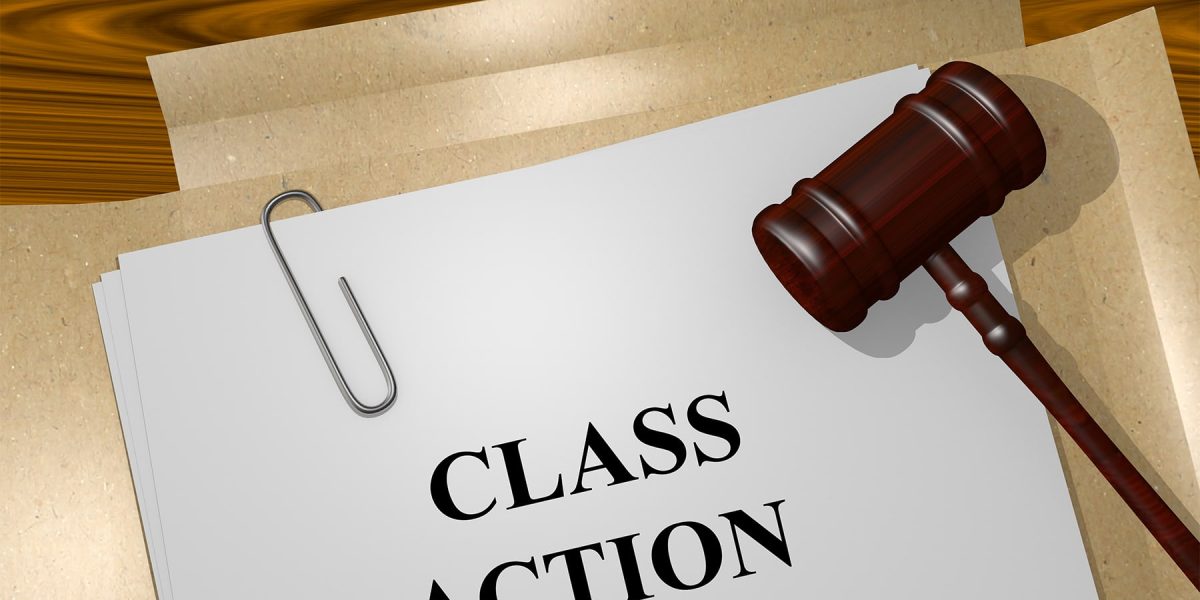Checking Out Class Action Suits: What You Need to Know
Class activity claims have ended up being significantly widespread in today's lawful landscape, with individuals joining forces to prosecute against organizations and firms. In this conversation, we will certainly discover the ins and outs of course activity claims, clarifying their definition, the requirements for declaring, and the possible benefits and drawbacks entailed. We will delve into the actions included in a class action legal action and check out some current landmark instances that have actually shaped this location of regulation. Understanding the complexities and subtleties of course action lawsuits is essential for anyone looking for justice in a collective way, so let's start our expedition together.
The Meaning of Course Activity Lawsuits
A course activity legal action is a lawful activity submitted by a team of individuals who have similar claims against a defendant. Class activity legal actions are typically brought when the number of prospective plaintiffs is too big for private claims to be functional.
Among the crucial elements of a class activity legal action is that the lead complainant, additionally called the class agent, stands for the passions of all the class members. The court designates the lead plaintiff based upon their capability to fairly and effectively represent the class. The lead complainant works carefully with the class activity attorney to seek and build a strong case settlement or various other treatments in support of the entire class.
In order for a class action claim to proceed, the court has to certify the course. This suggests that the court establishes that the claim meets particular demands, such as numerosity (a large sufficient number of course members), commonality (common concerns of law or reality), typicality (the claims of the lead complainant are common of the course), and adequacy of depiction (the lead plaintiff and course counsel can representing the class's interests) When the course is certified, the claim can relocate forward, and any type of judgment or settlement reached will relate to all class members unless they pick to opt-out.
Class action legal actions serve an important objective in providing access to justice for people who may not have the sources to seek their insurance claims individually. They additionally promote performance in the legal system by settling similar cases right into a single action, minimizing the burden on both the court and the celebrations included.
Needs for Filing a Class Action Claim

Another requirement is that the class must be sufficiently various. The precise number of class members required may differ depending on the territory and the nature of the instance. Nonetheless, it is usually anticipated that the course has to be huge enough that joining all the specific complainants into a single suit is a lot more effective than having several separate suits.
Additionally, it is vital that the class rep, that is the private or entity bringing the claim on part of the class, has regular cases and defenses to those of the course members. The representative has to additionally be able to sufficiently and fairly represent the passions of the entire course.

Benefits and Drawbacks of Course Activity Suits
Class activity claims provide both benefits and downsides for complainants and accuseds involved in the lawful process. On the one hand, one of the substantial benefits of class action legal actions is that they give a economical and efficient means for people with similar claims to seek justice collectively. By consolidating numerous comparable instances into one suit, course activities improve the lawful procedure and save time and resources for both complainants and accuseds.
Another advantage of class action suits is that they permit individuals with limited sources to seek compensation for their problems. In cases where the possible healing is tiny, specific claims may not be financially practical. Nonetheless, by signing up with forces in a course action, plaintiffs can merge their sources and boost their chances of getting a reasonable resolution.
In addition, class actions can promote social modification by holding firms answerable for their activities. By accentuating prevalent transgression or defective items, course actions can press firms to change their methods, boost item safety and security, or apply reforms.
However, course activities also have downsides. One potential negative aspect is that specific plaintiffs may have limited control over the lawsuits procedure and the ultimate result of the situation. The lead plaintiffs and their attorneys normally make essential decisions on behalf of the whole class, which may not constantly align with the private passions of each class participant.
Additionally, course actions can be lengthy and lengthy, commonly taking years to get to a resolution. The complexity and dimension of these lawsuits can result in delays and extended litigation, which can be discouraging for both plaintiffs and accuseds seeking a prompt resolution.
Actions Associated With a Course Action Lawsuit
The procedure of a class action lawsuit usually starts with the identification of a potential class and the filing of a problem. Once a team of individuals who share similar cases against a defendant is recognized, the lead complainant, or class rep, files an issue on part of the entire class. This grievance details the alleged misdeed and seeks problems or various other alleviation for all participants of the class.
After the complaint is submitted, the court will certainly determine whether the situation meets the needs for class qualification. These needs generally include numerosity (a huge enough course), commonness (comparable legal cases), typicality (the lead plaintiff's insurance claims are depictive of the class), and competence of depiction (the lead plaintiff and their attorney can adequately represent the course's passions)
If the court licenses the course, notice is offered to all possible course members, providing the chance to opt-out if they want to pursue their own private insurance claims - Assertio class action lawsuit. If a sufficient variety of class members stay, the situation will continue to the exploration stage, where both sides gather evidence and information appropriate to the insurance claims
Complying with exploration, the celebrations might take part in negotiation negotiations or continue to test. If the situation mosts likely to trial and the class dominates, the court will certainly determine the proper damages or alleviation to be awarded to the course members.
Recent Site Course Action Lawsuits
With a solid understanding of the actions entailed in a class action legal action, it is now essential to examine some current landmark situations that have actually made a substantial effect in the legal landscape. Future FinTech class action lawsuit. These situations have not just formed the means class activity suits are performed but have actually likewise brought about adjustments in numerous industries
One such spots case is the Volkswagen exhausts detraction, which led to the biggest course action settlement in automobile background. In 2015, it was exposed that Volkswagen had actually mounted software in their vehicles to rip off exhausts tests. This deception affected millions of customers worldwide, causing a class action legal action. The settlement reached in 2016 totaled up to approximately $15 billion, making up affected automobile owners and enforcing penalties on Volkswagen.
An additional notable case is the Johnson & Johnson talcum powder claim. Thousands of women submitted legal actions versus the company, claiming that their talcum powder items triggered ovarian cancer cells. In 2018, a court granted $4.7 billion in damages to 22 complainants. This situation elevated problems concerning the safety of talcum powder and triggered Johnson & Johnson to customize their item labeling.
These current landmark instances demonstrate the power of class action claims in holding corporations responsible for their actions and looking for justice for afflicted individuals. They work as instances of exactly how course action claims can cause considerable modifications and safeguard the civil liberties of consumers.
Conclusion
In verdict, course action lawsuits are a lawful mechanism that permits a group of individuals to collectively look for justice for an usual complaint. While they supply numerous advantages such as performance and cost-effectiveness, there are additionally downsides such as possible for minimal payment and prolonged legal procedures. Understanding the actions and demands involved in submitting a class action legal action is essential for individuals seeking to seek this lawful method. Current spots course activity claims have actually highlighted the value of such instances in supporting for customer legal rights and corporate responsibility.
One of the crucial elements of a class activity legal action is that the lead complainant, additionally known as the class representative, stands for the interests of all the class participants.In order for a course action lawsuit to continue, the court needs to accredit the course. This implies that the court identifies that the legal action BioVie class action lawsuit satisfies specific requirements, such as numerosity (a big sufficient number of course members), commonness (typical concerns of legislation or truth), typicality (the cases of the lead plaintiff are regular of the course), and competence of representation (the lead plaintiff and course guidance are qualified of representing the class's passions) When the course is licensed, the claim can relocate forward, and any type of judgment or negotiation reached will apply to all course participants unless they choose to opt-out.
The procedure of a class activity suit generally begins with the recognition of a prospective class and the filing of a complaint.
Comments on “Archer-Daniels-Midland Class Action Lawsuit: Your Legal Roadmap”